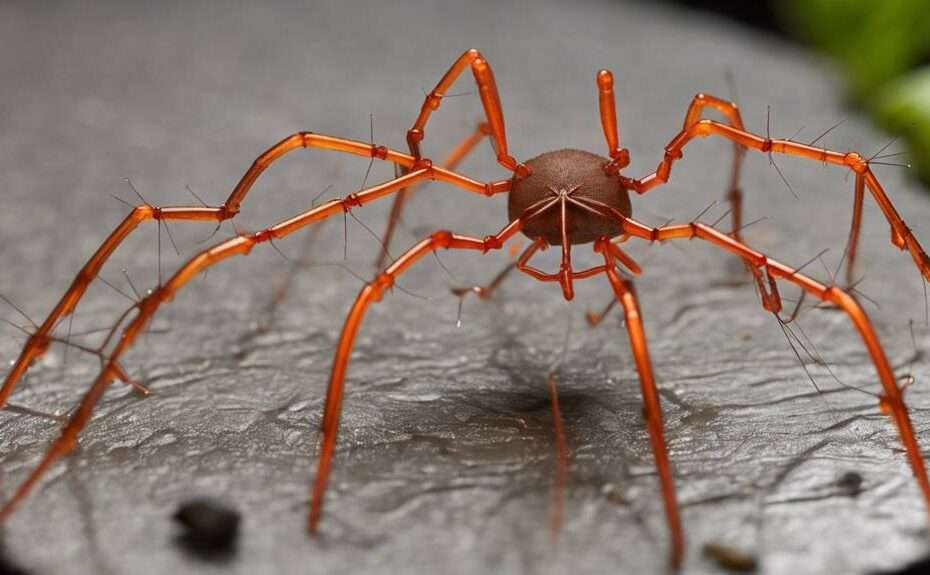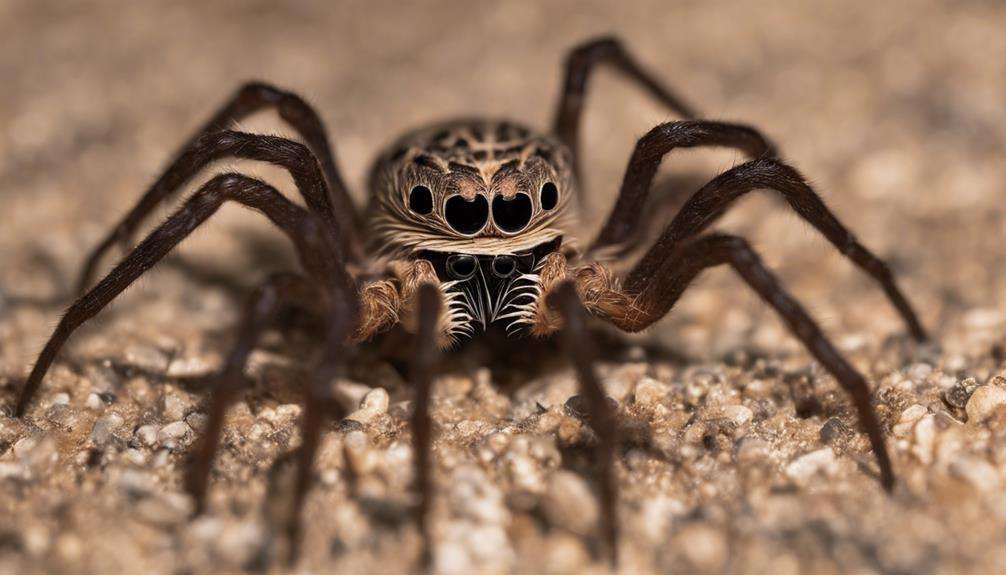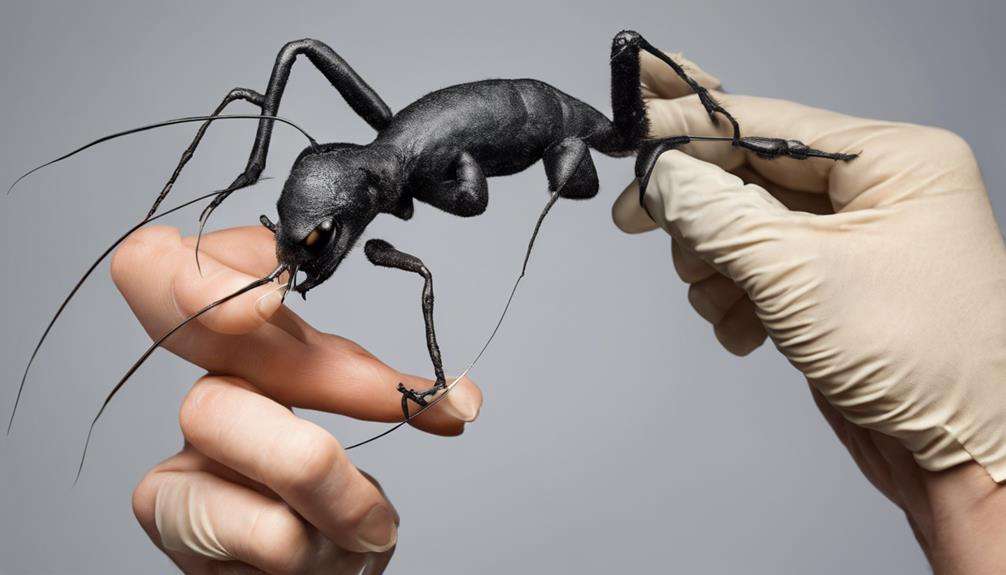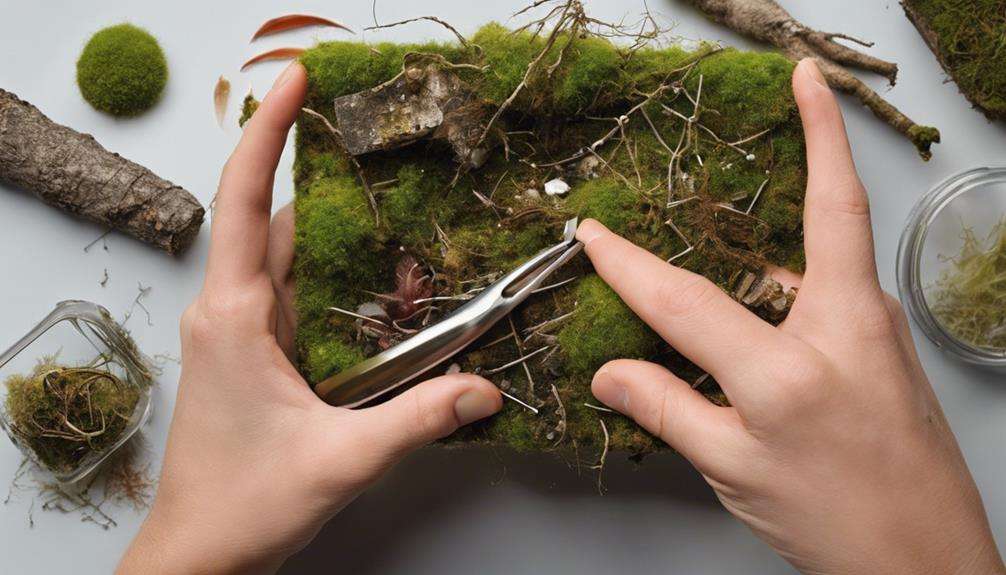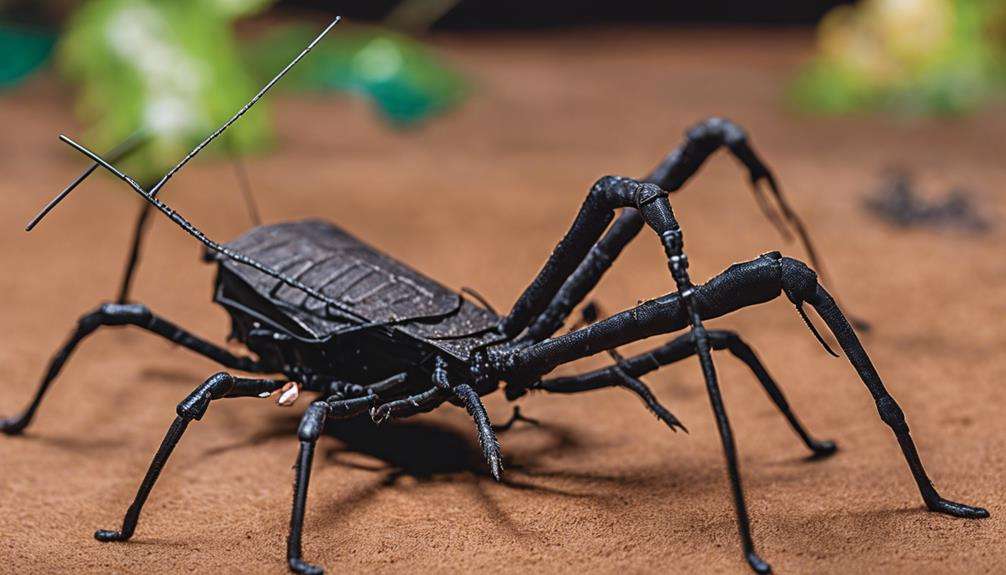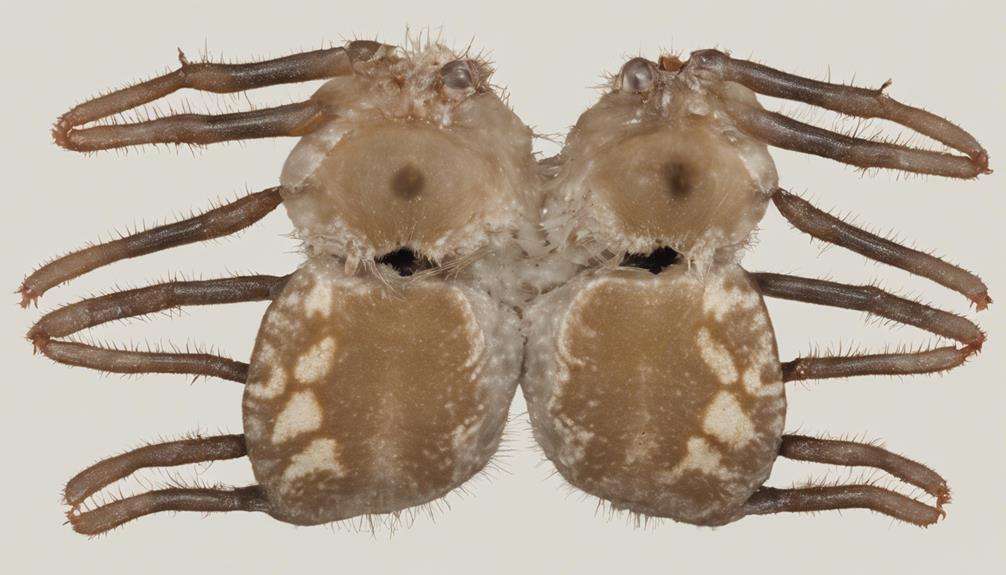You might be surprised to learn just how remarkably unique the behavior of Opilione pet species can be. From their unconventional feeding habits to intriguing reproductive practices, these arachnids exhibit a range of behaviors that truly set them apart.
Their social interactions and communication methods offer a glimpse into a world of fascinating complexity. As you explore the distinctive behaviors of Opilione pets, you'll uncover a rich tapestry of behavioral adaptations that highlight the remarkable nature of these creatures.
Key Takeaways
- Diverse feeding behaviors from scavenging to active hunting showcase their omnivorous diet.
- Complex reproductive strategies include courtship rituals and post-mating male guarding.
- Gregarious behavior in large groups aids in collective survival and predator evasion.
- Communication through tactile, chemical, and visual signals enhances social interactions and coordination.
Unique Feeding Behaviors of Opilione Pets
When observing Opilione pets in their natural habitat, you'll notice a fascinating array of feeding behaviors that showcase their unique dietary habits and adaptability. Opilione species exhibit a wide range of feeding behaviors, from scavenging on dead insects and feeding on plant material to actively hunting prey, displaying predatory behavior uncommon in other arachnid species. Their stomotheca feeding apparatus allows for efficient consumption of solid food, facilitating their omnivorous diet that includes consuming fungi and even scavenging on bird dung and feces, highlighting their adaptability to various food sources in the wild.
However, this adaptability comes with risks, as Opilione pets are vulnerable to internal parasites due to ingesting various food particles. Understanding the intricacies of their feeding behaviors is crucial, especially in a captive environment, to prevent such health issues. By studying the feeding habits of Opilione pets, we can ensure their well-being and longevity in captivity while appreciating the fascinating diversity of their dietary preferences.
Intriguing Reproductive Practices in Opilione Species
In opilione species, intricate reproductive practices are observed, showcasing a range of complex behaviors essential for successful mating and offspring survival. Some Opilione species exhibit elaborate courtship rituals involving male secretions and intimate tactile interactions.
After mating, males often exhibit male guarding behavior, protecting females from other potential suitors. Females, in turn, can store sperm for extended periods, strategically fertilizing their eggs. Maternal care is prevalent in certain Opilione species, with females guarding and meticulously cleaning their eggs to ensure the survival of their offspring.
The diverse mating strategies and post-mating behaviors seen in Opilione species play a crucial role in their reproductive success and overall species survival. Female guarding is a common behavior observed in Opilione species, emphasizing the significance of protecting the female and her reproductive potential. These captivating reproductive behaviors highlight the complexity and sophistication of Opilione species in ensuring the continuation of their lineage.
Social Interactions Among Opilione Pet Species
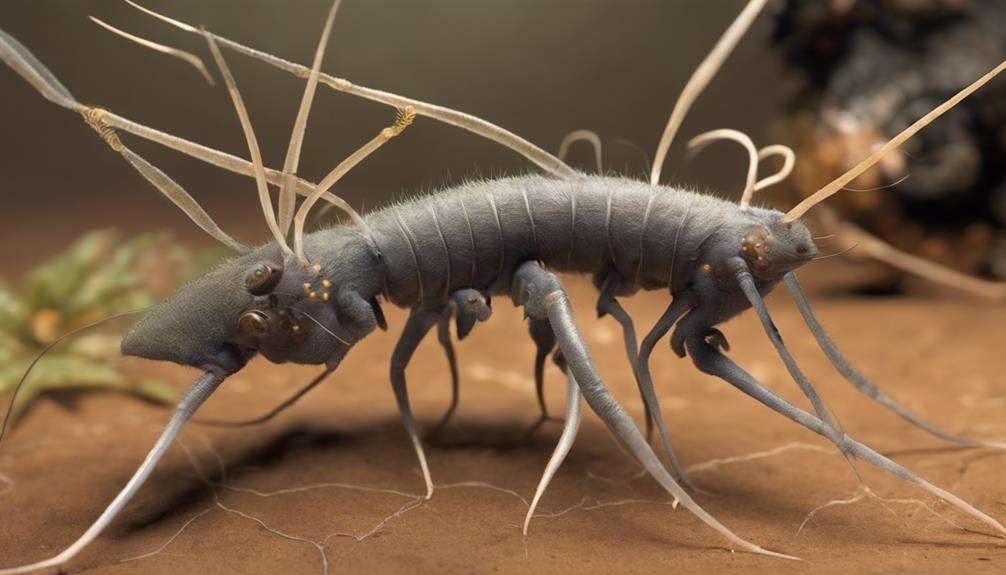
Social interactions among Opilione pet species reveal a complex web of communication and cooperation essential for their collective survival and well-being. These creatures exhibit gregarious behavior, forming groups that can range from a few individuals to astonishingly large gatherings of up to 70,000 members.
Social interactions play a crucial role in the survival of Opilione pet species, providing a safety advantage against predators and environmental challenges. Scent secretions are utilized for communication and coordination during group activities, allowing for effective collaboration within the community.
Additionally, some Opilione pet species display remarkable parental care behaviors, with males taking on the role of guarding and cleaning eggs to ensure the survival and well-being of their offspring. This level of collective care and coordination highlights the sophisticated communication methods employed by Opilione pet species to thrive in their habitats, emphasizing the importance of social interactions for their overall success.
Unusual Communication Methods of Opilione Pets
Building upon the intricate social interactions discussed previously, Opilione pets exhibit an array of unusual communication methods, utilizing tactile, chemical, and visual signals to convey messages within their community. These Opilione pet species, with their complex social structure, rely on a combination of sensory modalities to interact effectively.
Tactile communication plays a crucial role, as they use vibrations and drumming on surfaces to communicate with conspecifics, conveying information about food sources or potential threats. Moreover, chemical signals from scent glands are instrumental in marking territories and attracting mates, showcasing the significance of olfactory cues in their communication repertoire.
When it comes to visual displays, behaviors like leg waving and specific body postures are employed during courtship behavior and to signal aggression. The diverse communication methods employed by Opilione pets highlight the intricacies of their social interactions and underline the importance of understanding their behavioral strategies within the context of their environment.
Opilione Pet Species' Environmental Adaptations
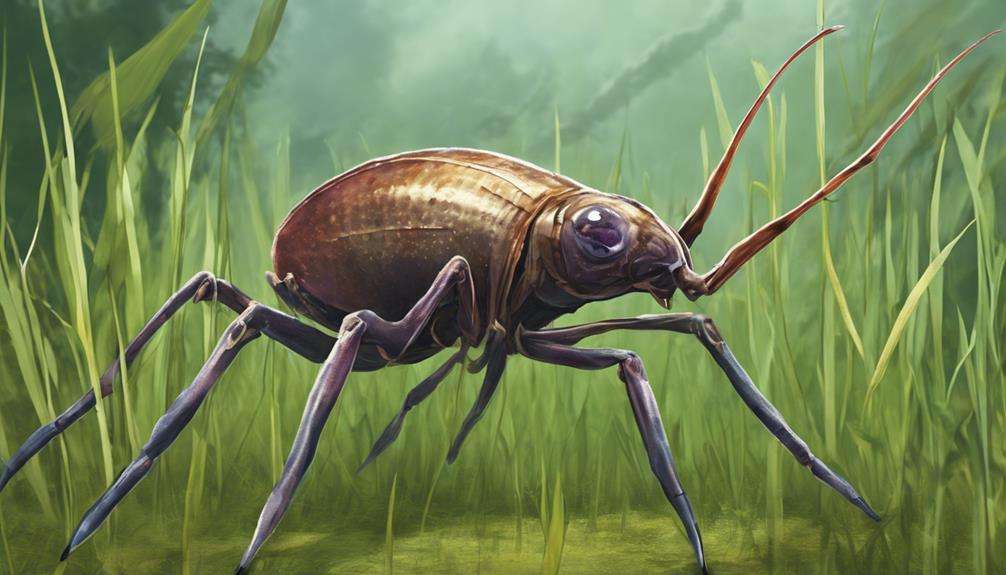
Evolved to thrive in a variety of terrestrial environments, Opilione pet species showcase unique adaptive behaviors that enable them to navigate and survive within their habitats. These environmental adaptations play a crucial role in their ability to thrive and contribute to the biodiversity of their ecosystems.
Here are four key adaptations observed in Opilione pet species:
- Defensive Mechanisms: Opiliones have evolved various defense mechanisms such as playing dead, detaching legs, and secreting defensive odors to deter predators. These behaviors increase their chances of survival in the face of threats.
- Gregarious Behavior: Opiliones exhibit gregarious behavior by forming aggregations. These group formations provide them with protection against predators and environmental challenges, highlighting the importance of social interactions in their survival strategies.
- Communication through Scent: The ability of Opiliones to use scent secretions for communication within groups enhances their social interactions. This chemical communication aids in coordinating group activities and alerting others to potential dangers.
- Ecological Roles: Through their environmental adaptations, Opilione pet species fulfill various ecological roles as scavengers, prey, and contributors to biodiversity within their habitats. Their adaptability and specialized behaviors make them integral components of their ecosystems.
Frequently Asked Questions
Why Are Opiliones Important?
Opiliones are crucial due to their ecological role, biodiversity importance, behavioral patterns, and reproductive strategies. They influence food chains, exhibit unique defensive mechanisms, and showcase diverse communication methods. Understanding their genetic diversity is key for conservation efforts.
Do Opiliones Have Fangs?
Opiliones lack fangs for venom secretion and prey capture. Instead, they possess chelicerae adapted for feeding. These structures allow them to crush and grind various food items, showcasing their unique feeding habits and adaptations.
What Are the Predators of Opiliones?
Opiliones face a range of natural enemies like birds, amphibians, and parasitic wasps. They've developed survival tactics such as thanatosis and autotomy. These creatures display diverse ecological impacts through their adaptation abilities and defensive mechanisms to evade predators.
What Is the Opiliones Habitat?
Opiliones thrive in diverse habitats, from forests to caves, influenced by temperature and food availability. They are nocturnal creatures, active at night. Their behavior, diet, and adaptations are shaped by their environment, ensuring survival and reproduction.
Conclusion
In conclusion, the distinctive behaviors of Opilione pet species reveal a fascinating world of unique feeding habits, intriguing reproductive practices, social interactions, unusual communication methods, and environmental adaptations.
Like a well-choreographed dance in the moonlit forest, these creatures exhibit a symphony of behaviors that set them apart from other species, showcasing their remarkable adaptability and social dynamics in the intricate web of nature.
